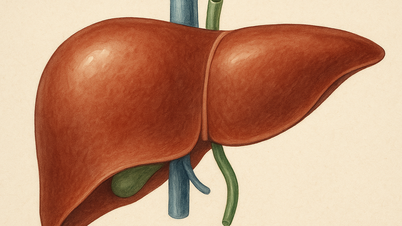Leukemia is a group of diseases in which cancer cells affect the function and production of blood cells in the bone marrow. Common types of blood cancer are leukemia, lymphoma and myeloma, according to the health website Healthline (USA).

Persistent bone pain can be a sign of leukemia
Leukaemia UK says that leukaemia occurs when abnormal DNA mutations develop in blood cells. In most cases, these mutations cause uncontrollable, lifelong health problems. Because these mutations occur in the DNA, they can be passed down to future generations.
Early detection of leukemia plays an extremely important role in preventing the disease from progressing and increasing the patient's chances of survival. Signs of leukemia that can be detected through common sense and observation include:
Chronic fatigue
When suffering from leukemia, the body will easily fall into a state of prolonged fatigue. This condition is different from normal fatigue in that even with rest, the patient still does not get rid of fatigue. At this time, cancer cells have affected the creation of blood cells in the bone marrow, leading to anemia. Over time, this condition causes fatigue.
Bone pain
Leukemia can cause bone pain , especially the long bones in the arms and legs. Blood cancers such as leukemia, lymphoma, and myeloma will greatly affect the bone marrow. This results in bone marrow pain. Bone pain will affect movement, increase the risk of fractures, and anemia.
Easy bruising, bleeding
When you have leukemia, your body’s blood clotting mechanism can’t function properly. This is because the cancer disrupts the normal functioning of platelets, which are essential for blood clotting. As a result, your skin can bruise easily and bleed a lot, even from minor bumps or injuries.
Swollen lymph nodes
Swollen lymph nodes, especially in the neck, armpit, or groin, can be a sign of lymphoma. This is a type of blood cancer that affects the lymph nodes. The lymph nodes swell because cancer cells have grown and accumulated in these tissues. Swollen lymph nodes feel tender to the touch and grow larger over time, according to Healthline .
Source link


![[Photo] National Assembly Chairman Tran Thanh Man chairs the meeting of the Subcommittee on Documents of the First National Assembly Party Congress](https://vphoto.vietnam.vn/thumb/1200x675/vietnam/resource/IMAGE/2025/5/8/72b19a73d94a4affab411fd8c87f4f8d)
![[Photo] General Secretary concludes visit to Azerbaijan, departs for visit to Russian Federation](https://vphoto.vietnam.vn/thumb/1200x675/vietnam/resource/IMAGE/2025/5/8/7a135ad280314b66917ad278ce0e26fa)
![[Photo] General Secretary To Lam begins official visit to Russia and attends the 80th Anniversary of Victory over Fascism](https://vphoto.vietnam.vn/thumb/1200x675/vietnam/resource/IMAGE/2025/5/8/5d2566d7f67d4a1e9b88bc677831ec9d)
![[Photo] President Luong Cuong presents the decision to appoint Deputy Head of the Office of the President](https://vphoto.vietnam.vn/thumb/1200x675/vietnam/resource/IMAGE/2025/5/8/501f8ee192f3476ab9f7579c57b423ad)
![[Photo] Prime Minister Pham Minh Chinh meets with the Policy Advisory Council on Private Economic Development](https://vphoto.vietnam.vn/thumb/1200x675/vietnam/resource/IMAGE/2025/5/8/387da60b85cc489ab2aed8442fc3b14a)

























































![[Photo] Prime Minister Pham Minh Chinh talks on the phone with Singaporean Prime Minister Lawrence Wong](https://vphoto.vietnam.vn/thumb/402x226/vietnam/resource/IMAGE/2025/5/8/e2eab082d9bc4fc4a360b28fa0ab94de)

































Comment (0)